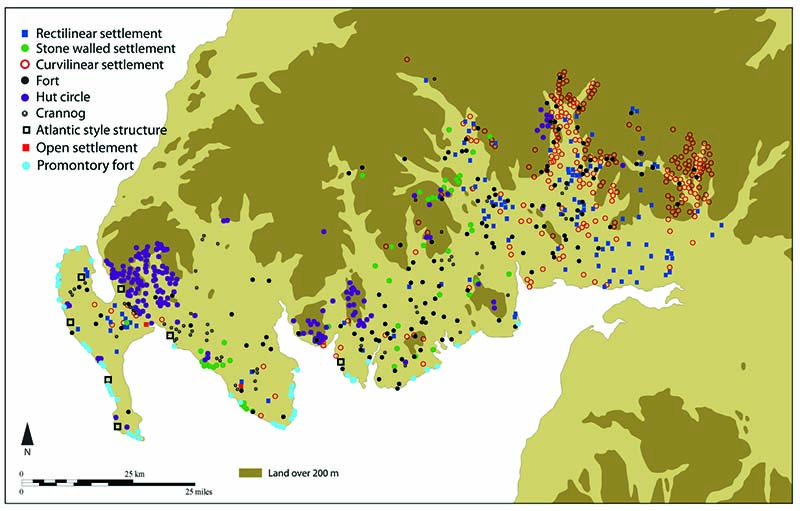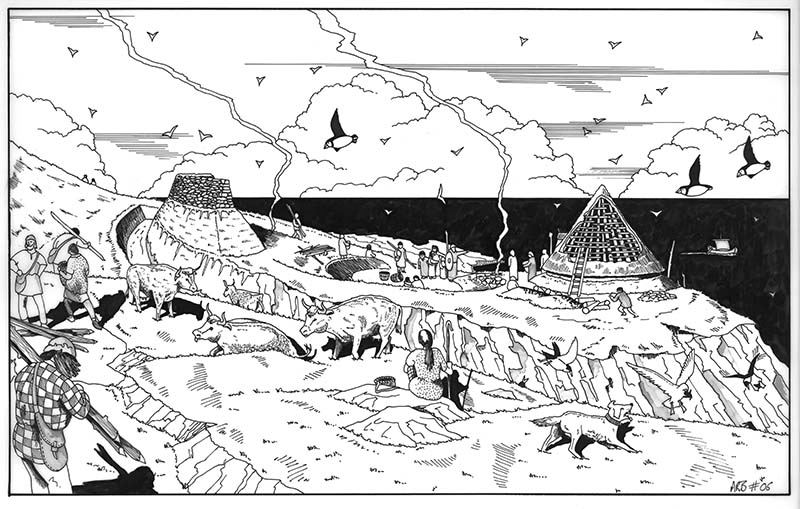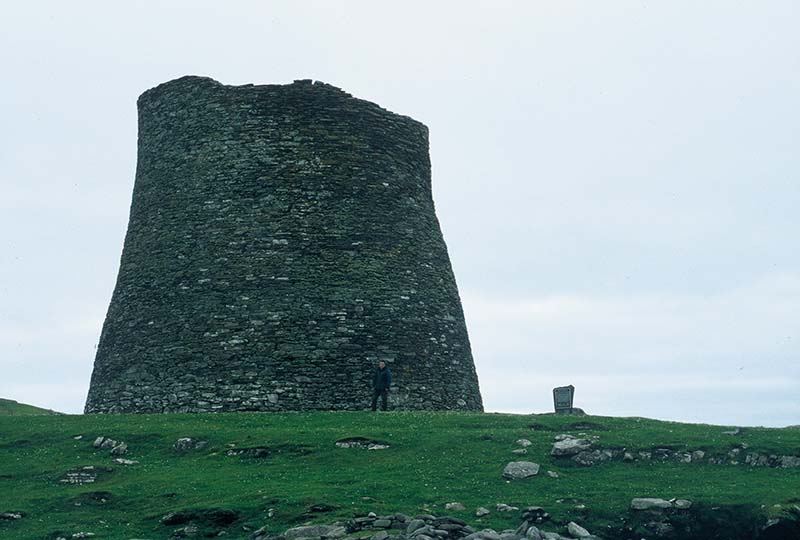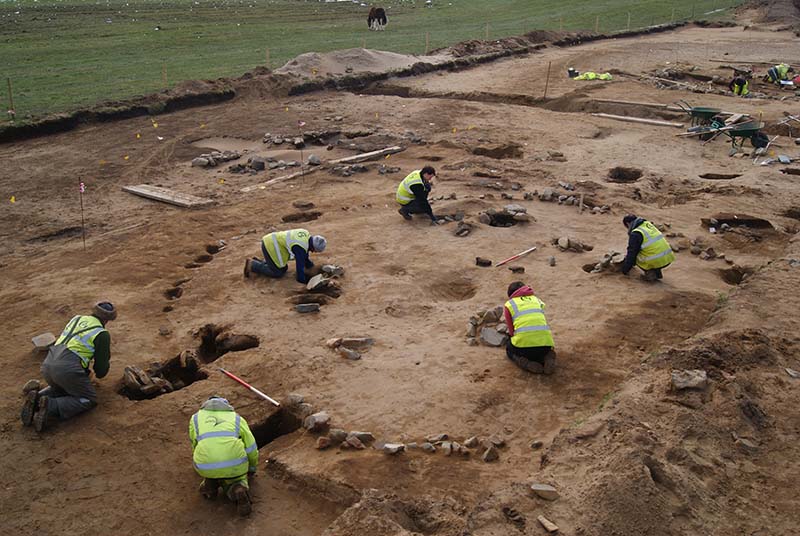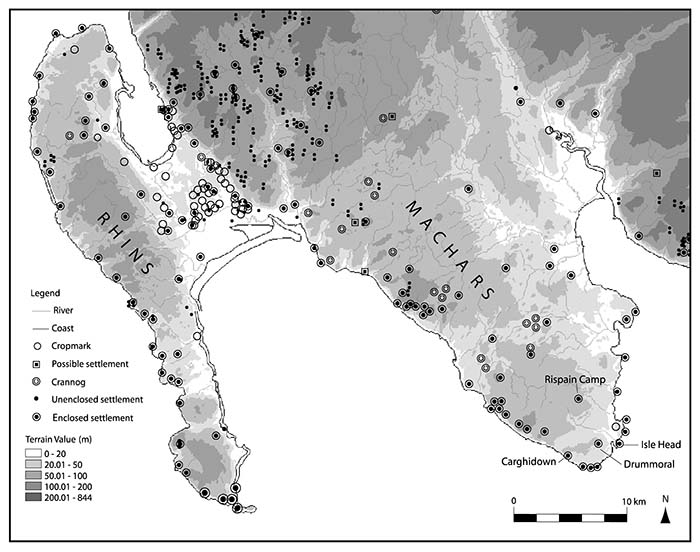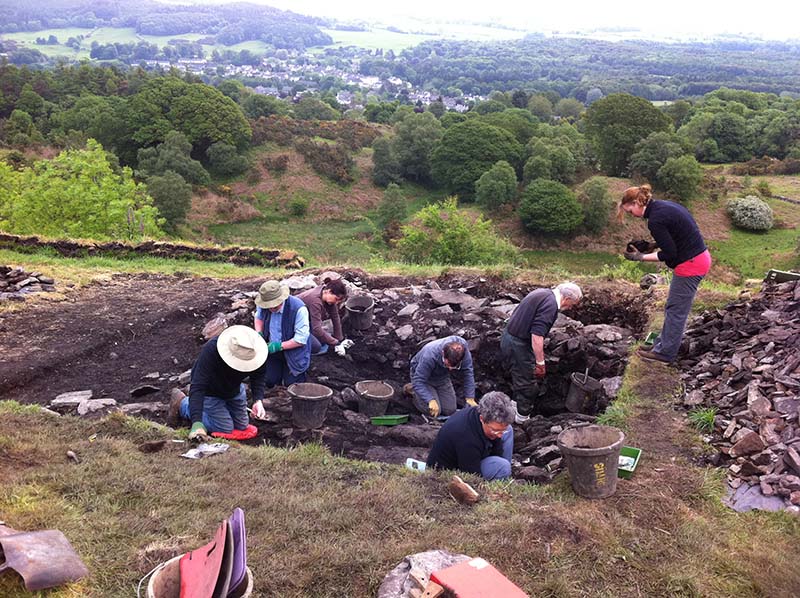Recent research by GUARD Archaeology into Iron Age settlement patterns in Galloway in south-west Scotland raises the question of whether the right perspective has been taken when trying to make sense of Iron Age settlement patterns across Scotland. Iron Age Galloway is a bit of a conundrum, difficult to clearly differentiate from the Iron Age characteristics of other regions of Scotland but often treated as somewhat distinct nonetheless. On the face of it, a distribution map of the various different classifications of site draws a ready distinction between Galloway and Dumfriesshire, the latter area often understood as sharing common traits with south-east Scotland, while the former area is seen as sharing more in common with Atlantic Scotland. To a certain degree these two areas encapsulate the perceived differences between the Iron Age settlement patterns of north-western and south-eastern Scotland.
However, many of the distinctive settlement patterns in Galloway, such as the marked distribution of promontory forts along its coast, or the abundance of crannogs within its lochs, do not reflect cultural conditions; rather they reflect the topography of the region. Promontory forts and crannogs are widely distributed across Scotland, where local topography allow. There are simply more promontories and lochs in Galloway in comparison to areas like Dumfriesshire and the archaeology reflects this.
But there is a potentially significant caveat to this, in that while the distribution of crannogs may not differentiate Galloway from the rest of Scotland, there are no crannogs south of the Solway despite the preponderance of lakes in Cumbria. In fact there do not appear to be any crannogs in England at all and only one in Wales, so it begs the question of why Iron Age Scotland is different?
Crannogs are normally understood as single household settlements and one might question if they are significantly different to other forms of single household settlements. These are plentifully evident across Galloway in a variety of small settlements, forts, brochs and duns that reflect wider Scottish architectural trends during the Iron Age. While brochs are common across Atlantic Scotland, they are also found in small scatters across central and south-east Scotland. However, as with crannogs, there are no brochs south of the Border either. So while there are some shared settlement forms across southern Scotland and northern England, such as rectilinear enclosed settlements, there are distinctive differences too. The reasons behind these differences have never really been explained.
One of the great distinctions that is made between north-western and south-eastern Scotland is the comparison drawn between the single household settlements that predominate in the north and west and the multiple household settlements that predominate in the south and east. This distinction is important culturally because permanently occupied multiple household settlements require and thus reflect different cultural practices for social cohesion amongst their inhabitants from those of single households as well as creating opportunities for increased social interaction. However, there are numerous single and often pre-eminent single household settlements in south-east Scotland and also numerous multiple household settlements in the north and west too, such as GUARD Archaeology's relatively recent discovery of an Iron Age village at Dunragit in the west of Galloway.
The distinctions in fact seem to reflect more the bias in research and visibility of Iron Age sites in these regions. Defining Iron Age sites solely by how they were enclosed at some point in time should in any case be treated with caution, especially since later prehistoric settlement architecture in Scotland often spans the centuries from the Late Bronze Age to the early medieval period. Compounding the lack of chronological focus, the apparent site distribution patterns reflect only what is visible and recorded, demonstrated by the distribution of hut circles in Galloway, which almost exclusively follows RCAHMS surveys of unimproved ground. So one must also take into account what is not apparent. The apparent preference in Iron Age Galloway for the occupation of either lochs, high ground or the coastal edge reflects the survival and visibility of sites in the agricultural margins of the modern landscape. And this is true of much of the north and west of Scotland too where good agricultural land is more sparsely distributed.
While brochs and duns are much thicker on the ground in northern and western Scotland, hillforts are nevertheless present in these regions too. But archaeological excavations of large multiple household settlements such as hillforts has simply not yet been undertaken with research in these regions instead focussed on the prominent single household settlement types such as brochs. As in Galloway this has led to a bias in the perception of the entire settlement pattern of these regions.
Until such work is undertaken, making sense of Iron Age settlement patterns and settlement hierarchies remains a problem. The closer one looks at the sheer variety of sites, the more ephemeral and tenuous the distinctions seem. Simply because an archaeological site can be described as a 'type' of site, does not confer meaning upon it. That is not to say that later prehistoric sites lack distinction or variety but trying to classify unexcavated sites in ever more complex sub-divisions is probably futile; somewhat akin to categorizing Christmas presents before they have been unwrapped.
Nevertheless, there are recognisable cultural traits in Iron Age Galloway such as the cleanliness of roundhouse interiors, the deposition of high status metalwork in wetland locations and the potential development of complex forts from the late Iron Age into the early medieval period, as revealed by GUARD Archaeology's work at Trusty's Hill. Other recognisable cultural traits in Iron Age Galloway include the varying monumental domestic architecture of the crannogs, brochs and duns scattered across the region, and the correlation between numerous small single household settlements and fewer large multiple household settlements. Significantly, these traits do not distinguish Iron Age Galloway from neighbouring regions but instead reflect broad Iron Age cultural practices apparent across the length and breadth of Scotland and indeed beyond to varying degrees. While rectilinear settlements are widely spread across Southern Scotland and Northern England and imply cultural similarities, the absence of brochs and crannogs south of the border starkly illustrates distinctive cultural differences too, for such monumental domestic architecture does not reflect environmental factors in the way that coastal promontory forts do, but stems from cultural traits. The same cultural choices for defining households in Galloway are common across Scotland but appear to be entirely absent in Cumbria just across the Solway, where there appears to be no environmental reason for an absence of crannogs for instance. This suggests that the distinction apparent during the Iron Age between Scotland and England is perhaps more significant than the more superficial regional variations within Scotland, because this distinction may define a clear cultural difference. As a line on the map, the present Anglo-Scottish border is undoubtedly arbitrary from a prehistoric perspective, but as a zone of land within the island of Britain, Southern Scotland/Northern England has witnessed a series of fluctuating national cultural boundaries since the Roman period. It is entirely plausible that significant cultural boundaries may have fluctuated across this zone throughout the Iron Age too.
'Iron Age Settlement Patterns in Galloway' by Ronan Toolis has recently been published in the Transactions of the Dumfriesshire & Galloway Natural History & Antiquarian Society 89.
